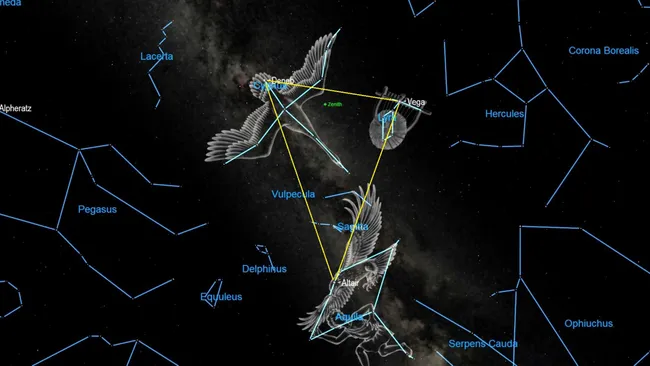-written by Yash Bhat, Reviewed by Ritik.
You must be wondering by reading the title what Little Green Men has to do with Pulsars? To answer this question we have to travel back in time to the year 1967 when the first pulsar was accidentally discovered. Yes! Accidentally because they were not known to exist before the year 1967. Then graduate student Jocelyn Bell was observing quasars through radio telescopes for her research, pointing at a particular direction in the sky.
What she noticed was that there were repeated pulses after every 1.33 seconds in the plot of the signal observed. She then consulted her supervisor Antony Hewish (who later won the Noble prize along with Martin Ryle for the discovery of pulsar) and after eliminating the option of the signal being from any man-made instrument, it was confirmed that this is something that has never been observed in astronomy and could be any “alien” communicating with us.
This possibility of aliens communicating with us gave the object name Little Green Men 1 (LGM-1). After a month, she observed a similar pulsating object but at a completely different location in the sky thus quashing out the possibility of them being aliens as it would be very difficult to have two aliens communicating with us at the same time. The search for alien life is still going on with various missions.
Now enough with the aliens, let’s talk about pulsar and a few facts about them. Before diving into the science of it let me present you a fact about them, Pulsar is actually an abbreviation for Pulsating Radio source.
What are pulsar? How do we observe them from Earth?
Pulsars are rapidly rotating and highly magnetized neutron stars that emit out beams of electromagnetic radiation from their magnetic poles. Too much jargon in a single line! Let me break down this definition for you. When a massive supergiant star with a mass of 10-25 times of our sun explodes into a supernova, in its center we can find a small, very dense spherical celestial object which is known as a neutron star.
To know how dense the neutron star is, if we take one spoonful of neutron star then it would weigh almost 1 billion tons roughly similar to the weight of Mt. Everest. Pretty heavy right? Spinning Neutron stars with very high magnetic fields and emitting electromagnetic radiation are known as pulsar. We will talk about how does it spin and emit beam of light later.
Pulsar have a size of a few kms but weigh more than our Sun. Pulsar are a very interesting topic in the field of astronomy and they are being used to understand extreme states of matter, find planets beyond our solar system and test general relativity at its extreme. Pulsar may also aid scientists in the detection of gravitational waves, which could lead to understanding powerful cosmic events such as supermassive black hole collisions.
Pulsar unlike normal stars aren’t visible through our naked eyes. The brightest known pulsar till today is 1000 ly away from us and has a magnitude of 23.6, our human eyes can see only up to 6 magnitude with naked eyes under ideal viewing conditions. Pulsar if visible would appear as flickering stars from Earth. They would appear to blink in a steady rhythm, on and off, on and off. In reality, it’s not the pulsar that flicker but when the constant electromagnetic radiation(light) emitted from its magnetic poles, as it spins, sweeps the Earth we see them as flickering.
To understand this imagine a lighthouse emitting a beam of light resembling a pulsar and the sailor on the ship, us, observing it blinking as the light sweeps through us. The reason for which we are seeing this “pulsed” nature of pulsar is due to the misalignment of the magnetic axis(from which light beam is emitted) and the rotational axis.
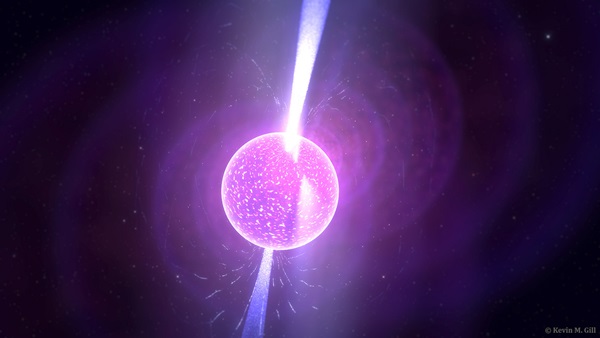
Why do pulsar spin? What are the types of pulsars based on their spin rates?
The spinning of a pulsar is due to the law of conservation of angular momentum. Let me explain this in more detail. Every star in the universe does have some rotation and when the supergiant’s explode into a supernova, the left-behind object is a neutron star which has a very small radius, thus due to the law of conservation of angular momentum the effect of change in the radius transfers to the spinning of the neutron star and thus making pulsars very fast spinning celestial objects. To understand this imagine a figure skater, they start their spin with their arms and legs farther out from their body and increase their spinning when they pull their limbs close to the body.
Based on their spinning rates pulsars are classified as Slow pulsar and Fast pulsar. Slow pulsars are the slowest pulsar ever discovered, with spin rates on the order of once per second. Fast pulsars or millisecond pulsars are the fastest known pulsars, spinning hundreds of times per second (because their spin period is measured in milliseconds).
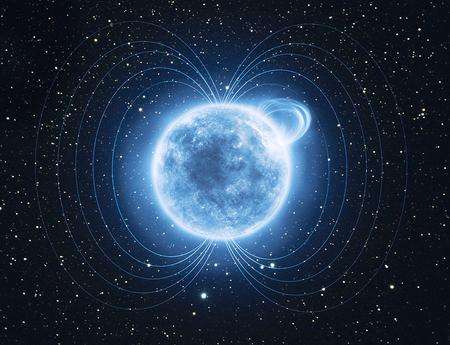
Pulsars are of the size of small cities, therefore reaching such high speeds is not an easy task. Millisecond pulsar, in reality, require an additional source of energy to reach such a high rotation rate. Millisecond pulsars are thought to have been generated by stealing energy from a companion. The pulsar absorbs the matter and momentum from its companion star thus increasing its spin rate with time. This is bad news for the partner star, as the pulsar may consume it entirely.
This could explain why millisecond pulsars have been identified in the absence of any observable partner. Black widow stars and redback stars are two sorts of hazardous (life-sucking) spiders named after systems where astronomers witness a pulsar sucking the life from a star.
What makes a pulsar radiate?
The wavelength of the electromagnetic radiation emitted by the pulsar can range from long radio waves to the most energetic gamma rays. The first pulsar observed in the year 1967 was observed in the radio band. Distinct mechanisms are likely responsible for producing different wavelengths of light from the area above the pulsar’s surface, according to scientists.
Now coming to the question of what does make pulsar radiate, the answer lies in the phenomenon of electromagnetism. A neutron star has a very strong magnetic field as well as it rotates rapidly. This combination of magnetic field and rotation generates an electric field that rips away the charged particles (electrons, protons, charged atoms) on the surface of the neutron star, accelerating the charged particles along the magnetic field line and thus producing two beams of electromagnetic radiation along the magnetic axis.
This phenomenon is shown in the figure. Also with time, the pulsar rotates more slowly as they radiate their energy away but this process can take hundreds of years to make a significant change.
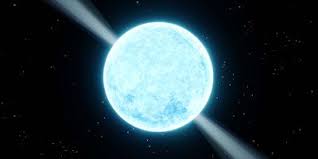
What are the different categories of pulsars?
Pulsars are categorized into three different classes based on the source of the power of the electromagnetic radiation.
1. Rotation-powered pulsars: Pulsars (in general, isolated radio pulsars) with powerful magnetic fields that cause accelerated charged particles to produce radiation are known as rotation-powered pulsars.
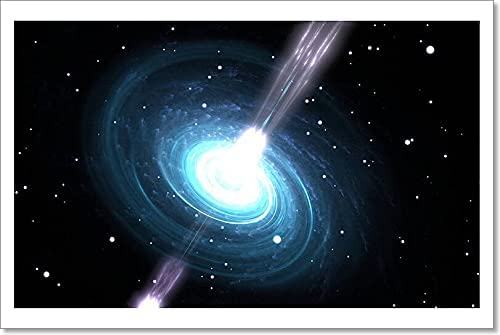
2. Accretion-powered pulsar: Accretion-powered pulsars are X-ray binary pulsars whose pulses are produced by the neutron star’s accretion flow. Instead of falling uniformly onto the neutron star, the pulsar’s magnetic field channels the steady flow (accretion) of matter from the companion star onto the neutron star’s magnetic poles, resulting in a pair of “hot spots” on the pulsar surface. These hot areas are brighter in X-rays than the rest of the star when the pulsar rotates, causing X-ray pulsations at the spin rate. The magnetic field (and hence the channelling) in accretion-powered millisecond pulsars is relatively weak, making the pulsations difficult to detect.
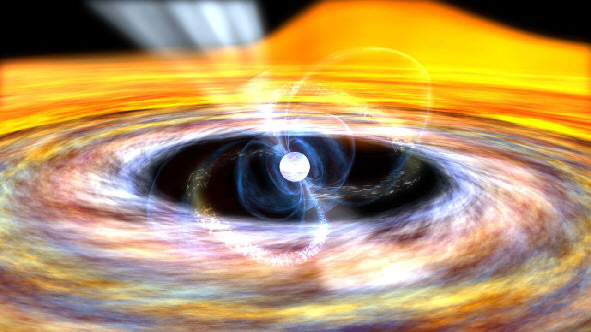
3. Magnetars: A magnetar is a rare type of neutron star with an extremely high magnetic field as its defining feature. The magnetic field is a trillion times stronger than the Earth’s and 1,000 times stronger than a normal neutron star.
Magnetars are the most magnetic stars in the cosmos by a long shot. One would perish very fast if one got closer to a magnetar than roughly 600 miles (1,000 km). Its magnetic field would obliterate one’s body, ripping electrons from the atoms and transforming one into a cloud of monatomic ions, or single atoms devoid of electrons.
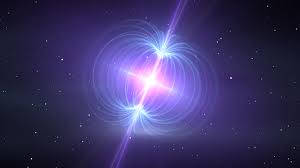
Applications:
Pulsars are quite useful while studying the mysteries of our universe. Pulsars helped astronomers to study an object never observed before, neutron stars. Milliseconds pulsars has helped to test general relativity in the conditions of intense gravitational field. The pulse of a pulsar can also be used as an external reference to measure time, they are not as precise as atomic clocks but they are quite stable and regular. Pulsars can also be used to detect gravitational waves.
There are currently 3 observatories in the world which uses pulsars to detect gravitational wave. The pulses of millisecond pulsar are used as galactic clocks and a disturbance in this clock can mean that a gravitational wave has passed through.
ENJOYED READING THIS ARTICLE? CONSIDER READING: BE IT HALLEY’S COMET OR COVID-19 – CHAOS IS INEVITABLE

